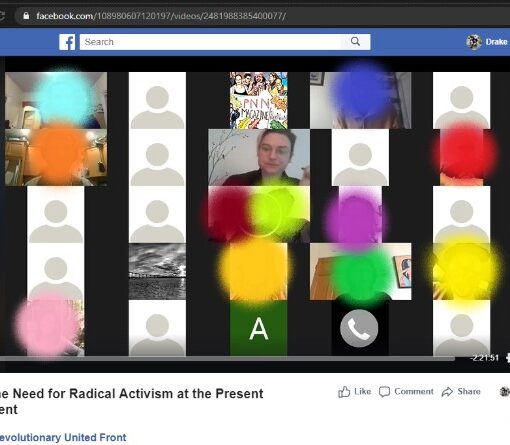
I’m a Mellon Humanities Public Fellow with the PublicsLab. As part of this fellowship, I’ve been working at Constructive to both learn how my existing skills can be valuable outside the university and to also learn new ones more suited to settings beyond the academy.
As Communications Associate, my responsibilities centered on managing public-facing communications, in the form of social media, biweekly newsletters, and thought leadership content. I was also brought aboard client projects to provide strategic recommendations on their web content—what it should say, how it should be organized, what brand narrative it creates, and so on.
While this experience has been generative in more ways than one, my biggest takeaways revolve around writing. Writing for the public at Constructive helped reorient my perspective on academic writing. It reinforced for me that academic writing is a particular genre of writing—one that’s tailored to a particular workplace (the university) and to specialized audiences (fellow scholars). Neither does this style lend itself to easy transfer nor is it universally engaging.
It’s vital to take stock of public writing (especially on the web) as the unique beast it is. If you want to communicate effectively with those outside the academy, it’s imperative to diversify your writing chops. In this post, I reflect on my own experiences to offer some tips on how to talk to the public on digital platforms in ways that make them listen.
Audience is everything
If there’s one maxim you should keep front and center as you embark on your public writing journey, it’s this one.
Academic writing is solipsistic—it positions us as experts in our chosen fields by emphasizing our contributions. Public writing, in contrast, is all about your audience. A simple web search assails them with a number of bids for their attention. Why should they respond to yours?
Remember: audiences reading online are selfish. They’re trawling the internet with particular needs in mind (whether conscious or not) and they’ll respond to the content that satisfies those needs most effectively. If you want them to interact with your content, you have to understand your audience and give them what they’re looking for.
This means deprioritizing yourself in favor of them. Determine who your audience is and offer content that responds to their needs, in the language they’d use (research this by visiting online forums they frequent, perhaps). This is also how you’ll gain authority and build their trust, making them come back to you time and again.
Online audiences don’t read; they scan
Research has shown that people scan content online in an F-shaped pattern: across full sentences from left to right initially, and then vertically down, with some horizontal movement across headings.
What this means for your writing is that your first couple of sentences are vital—you’ll either hook your readers or lose them. In those initial sentences, readers are trying to gauge whether your content is relevant or interesting to them, often both. Frontload your content and use a strong subject and verb to reel ‘em in quick.
Since readers scan vertically downward after those first few sentences, sub-headings are key. Break up your piece into sections with sub-headings that unravel a story. Make sure they’re specific, succinct and work as effective signposts for the sections they title.
Avoid repetition
Looping is a common feature of academic writing. You make a claim, use a couple of paragraphs to flesh it out and then often reiterate it to drive your point home. You may also restate your claim several times in the article or chapter if it’s particularly central to the overall argument you’re making.
Both your audience’s attention span and the space provided to you for a piece of content in the digital sphere is limited. This doesn’t allow for repetition. Your task is to guide your readers from old to new, familiar to unfamiliar information quickly and efficiently. Economy is the name of the game.
Structure your content
Imagine landing on a webpage and seeing a thick, unsegmented block of text, running from left to right in tiny font. How bad is your itch to ‘X’ out?
Make sure your content is laid out in a way that makes it visually appealing. Divide your content into short paragraphs and segment it in a logical way using sub-headings. Avoid embedding too many links, and when you do, try to ensure that the linked text is at the end of a sentence rather than squat in the middle of it. The latter creates a choppy reading experience that your audience will attribute to your content itself.
Make your content accessible
Academic writing is riddled with jargon. Remember: jargon is language that makes sense to a specialized audience. When you’re looking to engage broader audiences, you want to ensure that your language mirrors your intentions: make sure the work your language does is that of opening, inviting, and expanding, rather than gatekeeping.
This doesn’t mean that you have to dumb your content down. ‘Dumbing down’ implies a vertical relationship—a speaker on high talking down to a group of inferior listeners. There’s no respect there, and if you want a broader audience engaging with your content, respecting them is key. An alternative term that captures the ethos of what I’m suggesting here is ‘translation’. You’re taking information and giving it new form.
Lastly, avoid run-on sentences. They slow readers down and are difficult to process, prompting a reader’s quick exit. Use a mix of short and long sentences to make your content snappy and scannable.
While there are many more changes you can implement to make your writing more digital -friendly—many of which I myself am still learning—I hope these tips provide a useful launchpad to engage wider audiences with more impact.
 Queenie Sukhadia is a student in the English PhD program and Mellon Humanities Public Fellow. Her research is focused on questions of secondary witness—how we receive the narratives of those testifying to atrocities—in global human rights literature. She is interested in thinking through the ways in which we can read testimonial narratives outside of the frames made common-sense by liberal structures such as the courtroom. A firm believer in the idea that the university is only one of many valuable spaces of knowledge production, Queenie is committed to working at the intersection of academia and external publics to facilitate public good. Apart from being a scholar, she is also a creative writer and published a collection of short stories, A City of Sungazers, in 2017. Queenie holds a BA in English (with high honors) and Psychology from Dartmouth College and an MA in English (with distinction) from Georgetown University.
Queenie Sukhadia is a student in the English PhD program and Mellon Humanities Public Fellow. Her research is focused on questions of secondary witness—how we receive the narratives of those testifying to atrocities—in global human rights literature. She is interested in thinking through the ways in which we can read testimonial narratives outside of the frames made common-sense by liberal structures such as the courtroom. A firm believer in the idea that the university is only one of many valuable spaces of knowledge production, Queenie is committed to working at the intersection of academia and external publics to facilitate public good. Apart from being a scholar, she is also a creative writer and published a collection of short stories, A City of Sungazers, in 2017. Queenie holds a BA in English (with high honors) and Psychology from Dartmouth College and an MA in English (with distinction) from Georgetown University.







